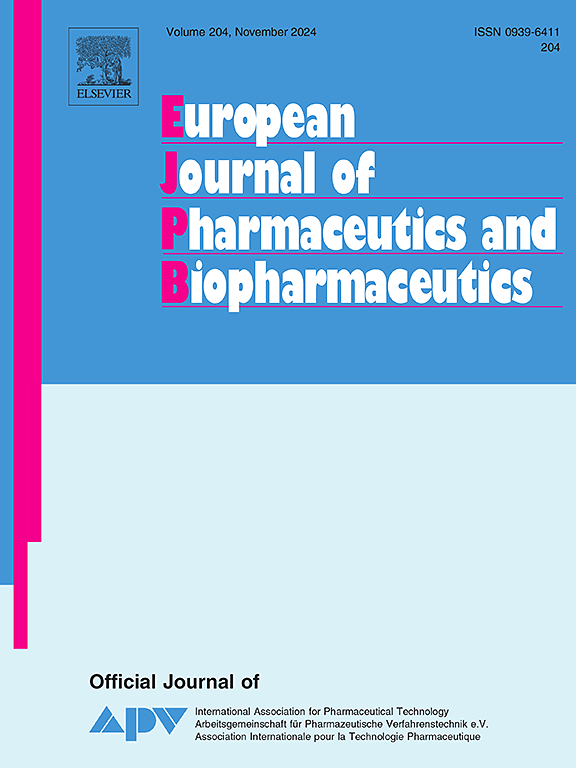药物输送系统中的赋形剂:经批准的人类眼科配方非活性成分的全面审查。
IF 4.4
2区 医学
Q1 PHARMACOLOGY & PHARMACY
European Journal of Pharmaceutics and Biopharmaceutics
Pub Date : 2025-01-19
DOI:10.1016/j.ejpb.2025.114637
引用次数: 0
摘要
药用辅料,通常被称为非活性成分,包括除活性成分外的任何物质,这些物质在制剂中发挥着独特而重要的作用。其目的是增强特定的特征,无论是与配方的性能有关,还是与患者舒适度、安全性和可接受性有关。由于提供的毒性研究有限,以及多年来报道的几种过敏和毒性副作用,监管机构批准非活性成分供人类使用并非易事。一般来说,辅料在经过整体配方分析时,而不是单独的物质,才能在良好生产规范(gmp)中获得批准。然而,由于只有美国食品和药物管理局(FDA)提供了一份完整的清单,描述了目前批准用于人类使用的药品中的非活性成分,因此缺乏关于这一主题的最新信息。在这里,我们旨在概述FDA批准的用于人类眼科的主要辅料,重点是它们在眼科配方中的功能作用,特别是眼药水,以及这些成分批准所涉及的监管要求。本文章由计算机程序翻译,如有差异,请以英文原文为准。

Excipients in drug delivery systems: A comprehensive review of approved inactive ingredients for human ophthalmic formulations
Pharmaceutical excipients, commonly known as inactive ingredients, encompass any substance aside from the active ingredient that fulfills a distinct and vital role in a formulation. Their purpose is to enhance specific characteristics, whether associated with the performance of the formulation or aspects related to patient comfort, safety, and acceptability. Because of the limited toxicity studies provided, and the several allergic and toxic side effects that have been reported throughout the years, it is not trivial for the regulatory agencies to approve inactive ingredients for human use. In general, excipients are approved within good manufacturing practices (GMPs) when they undergo analysis of the formulation as a whole, not the standalone substance. However, there is a lack of updated information regarding this subject, given that only the American Food and Drug Administration (FDA) provides a complete list describing the inactive ingredients that are currently approved in drug products for human use. Here, we aimed to provide an overview of key excipients approved by the FDA for ophthalmic use in humans, focusing on their functional roles in ophthalmic formulations, particularly eye drops, and the regulatory requirements involved in these ingredients approval.
求助全文
通过发布文献求助,成功后即可免费获取论文全文。
去求助
来源期刊
CiteScore
8.80
自引率
4.10%
发文量
211
审稿时长
36 days
期刊介绍:
The European Journal of Pharmaceutics and Biopharmaceutics provides a medium for the publication of novel, innovative and hypothesis-driven research from the areas of Pharmaceutics and Biopharmaceutics.
Topics covered include for example:
Design and development of drug delivery systems for pharmaceuticals and biopharmaceuticals (small molecules, proteins, nucleic acids)
Aspects of manufacturing process design
Biomedical aspects of drug product design
Strategies and formulations for controlled drug transport across biological barriers
Physicochemical aspects of drug product development
Novel excipients for drug product design
Drug delivery and controlled release systems for systemic and local applications
Nanomaterials for therapeutic and diagnostic purposes
Advanced therapy medicinal products
Medical devices supporting a distinct pharmacological effect.

 求助内容:
求助内容: 应助结果提醒方式:
应助结果提醒方式:


